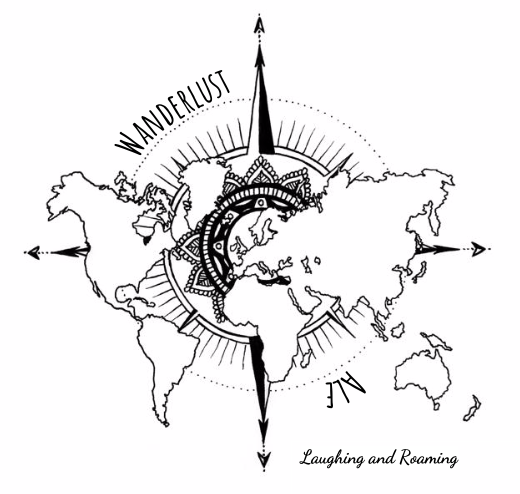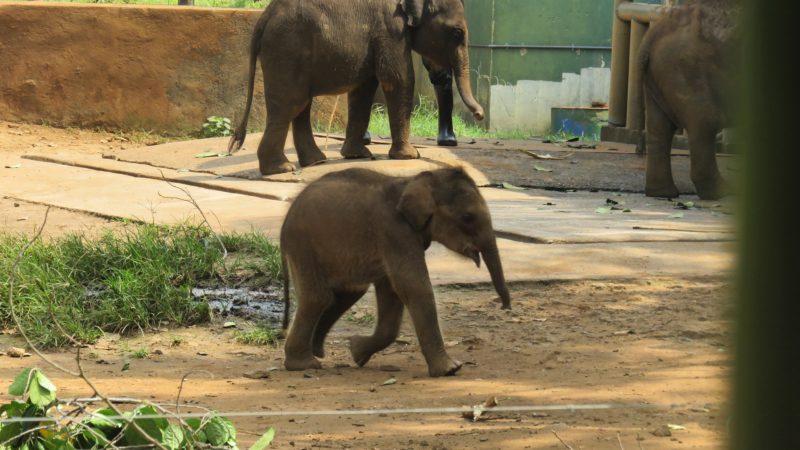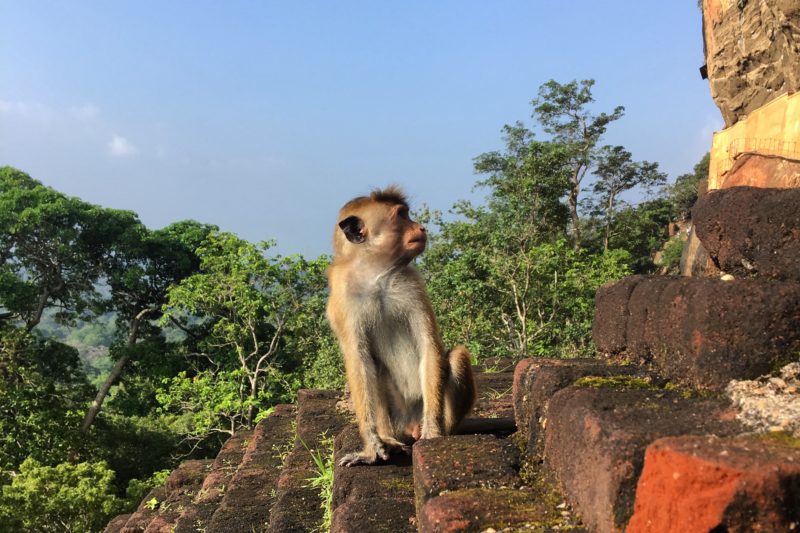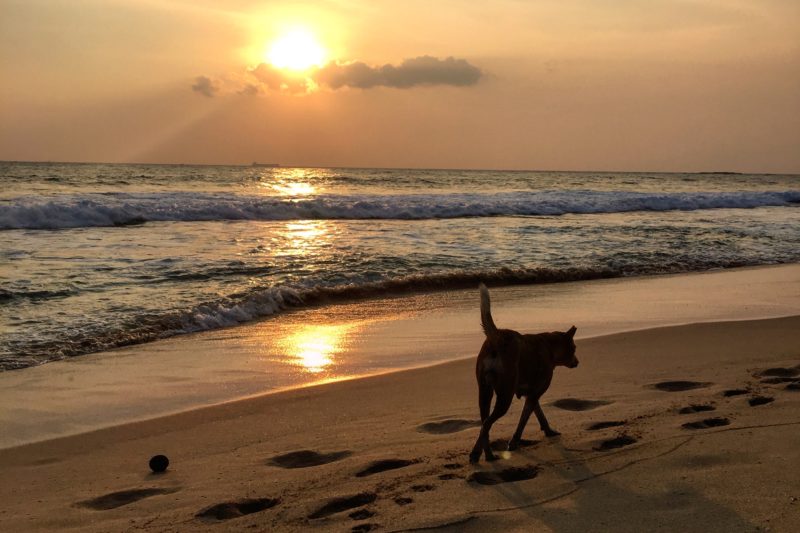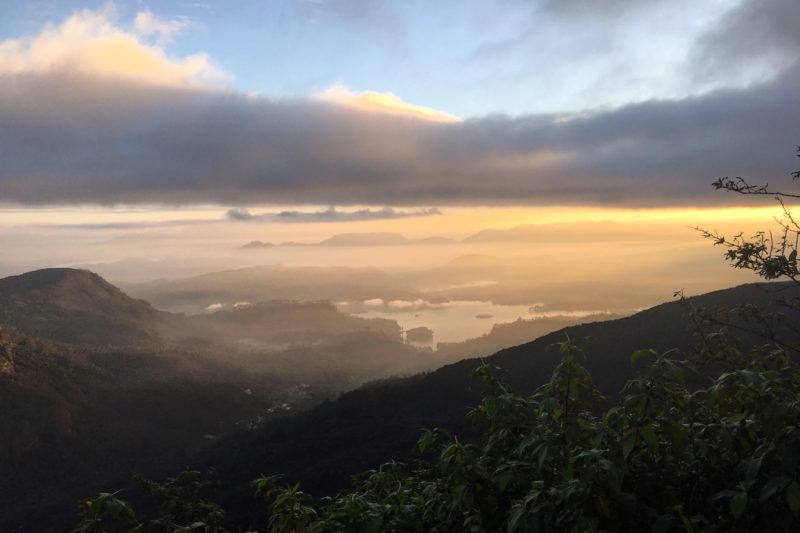*This article has been first published in April 2019 in French. Since that date, many things might have happened which is not mentioned there.
This is the question that has been debated for some time about this place, which is well known from the tourist circuits and which I also visited during my stay. By doing a little research before our trip, this orphanage seemed interesting and reliable, mainly because it is under the aegis of the government. Hotels in the area are also well rated on various sites (I always rely on Booking.com) and we had found just the right accommodation, the Elephant Bay Hotel, from where we could see the elephants bathing in the river.
The orphanage was created in 1975 by the Sri Lankan government to collect, care for and protect the elephants, the sacred animal of the island, which are victims of malicious owners, hunting, poaching and deforestation, and which have been thrown out of their natural habitat. Located in a national park, when it opened, it had only five baby elephants. Nowadays, the orphanage, located in the village of Pinnawala, is home to nearly 90 elephants, males, females and young elephants combined.
So, at first glance, it seemed like a fantastic place where we could make a positive contribution to the well-being of these animals and then when we hear “elephant orphanage”, it seems like it should be legitimate, shouldn’t it be?
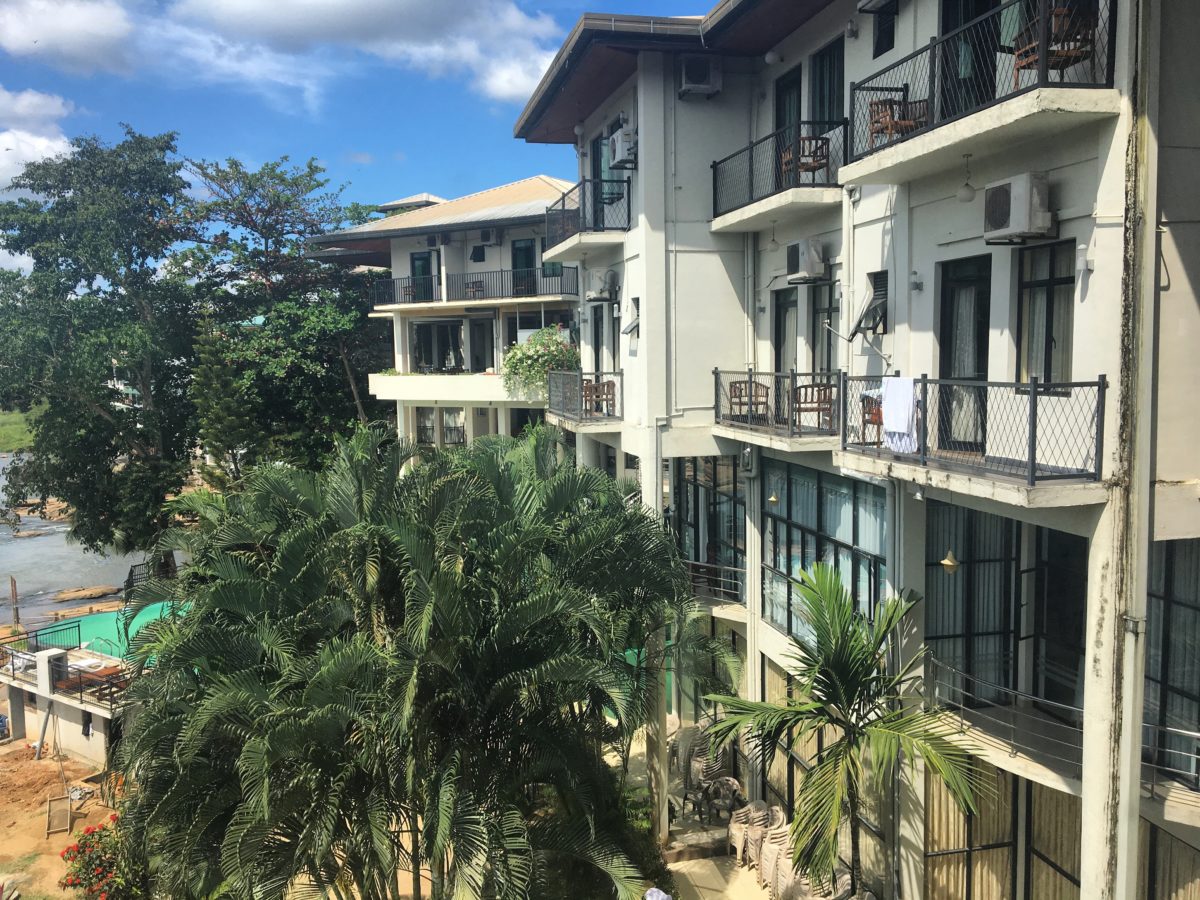

View from our hotel room
Nowadays, many travellers want to support projects that help to protect animals and want to see examples of positive change. But does animal protection rhyme with chains? Does this seem to go hand in hand?
While visiting this place, I asked myself countless questions while observing what was around me. I eventually realised that my interrogations come from my expectations and that there is a problem with this orphanage precisely concerning the management of visitor expectations. It is undeniable that when a person (here, a tourist) does not have enough information beforehand or on the spot (which is what we felt), he or she can be shocked by unexpected conditions.
Here are some of the things that might surprise visitors to Pinnawala:
- Elephants are often chained and the Mahouts use some kind of sticks.
- Elephants are paraded to their baths for tourists.
- The (too) close contact between tourists and elephants
- They will never be released into the wild.
I will try to describe and explain each of these conditions with my own feelings and the research I have conducted on the subject to have a clearer vision of reality.
I found it challenging to write this article for several reasons. First of all, I don’t want to give weight to negativity. It’s something that has always been important to me, but, above all, I don’t want to remain silent when I see bad things happening, in particular for a cause that is so close to my heart.
My words are my own, I am describing my reality, and I understand all too well that other people don’t feel the same way I do; and even as I was writing about it, I found it very difficult to take a real position (is it right or wrong?) on this place, but that will be in the conclusion
ELEPHANTS ARE OFTEN CHAINED AND THE MAHOUTS (THOSE WHO LOOK AFTER THEM) USE A KIND OF STICK.
Males should be separated in particular during the so-called “musth” period when they become sexually aggressive.
Also, in the wild, adult males leave the herd when they reach sexual maturity.
Females are also sometimes chained because they can be aggressive when it is time to take over the herd since, for the elephants, it is the female who leads the herd.
Finally, the elephants newly rescued from the orphanage should be “trained” to adapt to their fellow elephants and not to attack them when bathing.
Here are some explanations that may arise from putting chains on the elephants, yet none of this is explained during the visit to the orphanage.
For example, during our visit, we saw several elephants chained at different places in the river. One of them, in particular, was trying to break the chain and seemed visibly distressed that he could not be with the rest of the herd. Attending this sad spectacle without giving any explanation about the origin of the chain or the elephant’s isolation, made us leave much faster than the many tourists, obsessed by the idea of having the perfect picture of these beautiful pachyderms.
Are there really no alternatives to these chains?
At first, I thought that one of these alternatives would be this sort of stick they carry with them to direct the elephants to the desired location. But again, I couldn’t conceive of the usefulness of this object when I looked at it more closely. This traditional training tool is actually a long stick with a sharp metal tip at the end. According to the Mahouts, it is used to control the elephant in case of excesses.

However, when we saw the elephants a little frightened by this object, we asked our driver about it. He simply declared that the Mahouts use it as a threat and that the elephant, very intelligent (this is a fact), understands that he must not disobey…
It has a certain logic, I agree, but the elephant is not a domestic animal that we train in our society. It’s an animal that is originally wild, which moreover, is taken in an orphanage following domestication or has been abused in the wild. These animals should be allowed to rest in a pleasant setting without having to run around to entertain tourists.
This brings me to the second point.
ELEPHANTS ARE PARADED TO THEIR BATHING FOR TOURISTS.
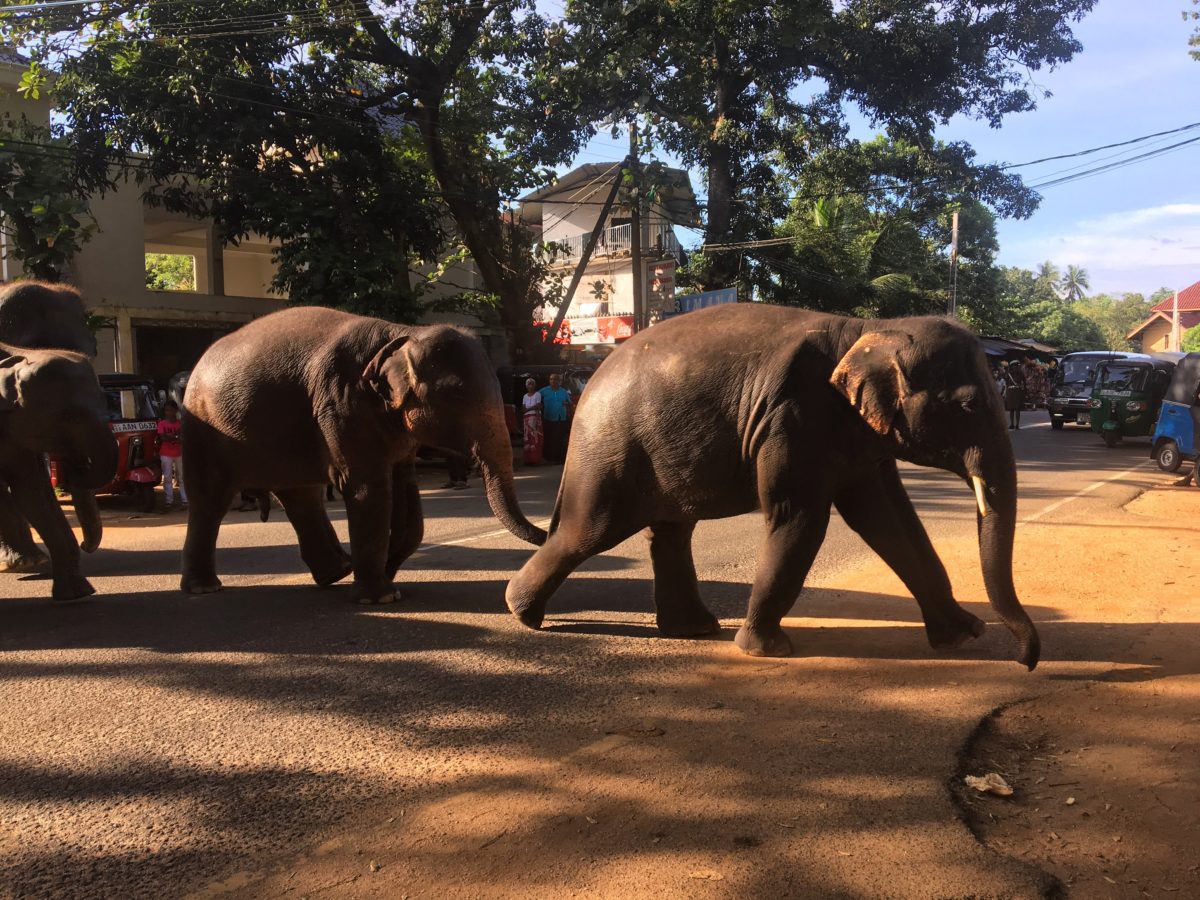
Twice a day, elephants walk down a long street to get to the river to bathe. This is the main attraction of the orphanage! Indeed, for about ten minutes, the road between the orphanage and the street leading to the river is closed to let this large herd of elephants go for a swim. We witnessed this when we arrived in Pinnawala, when we were waiting to get to our hotel… to sum up, it was a big mess!
As a result, as tourists, we can’t access this street without paying the entrance fee to the orphanage. Moreover, all along the street, souvenir shops follow one another until we arrive at a beautiful hotel that opens directly onto the terrace, where we tourists will position ourselves to watch the elephants bathing supposedly in freedom.
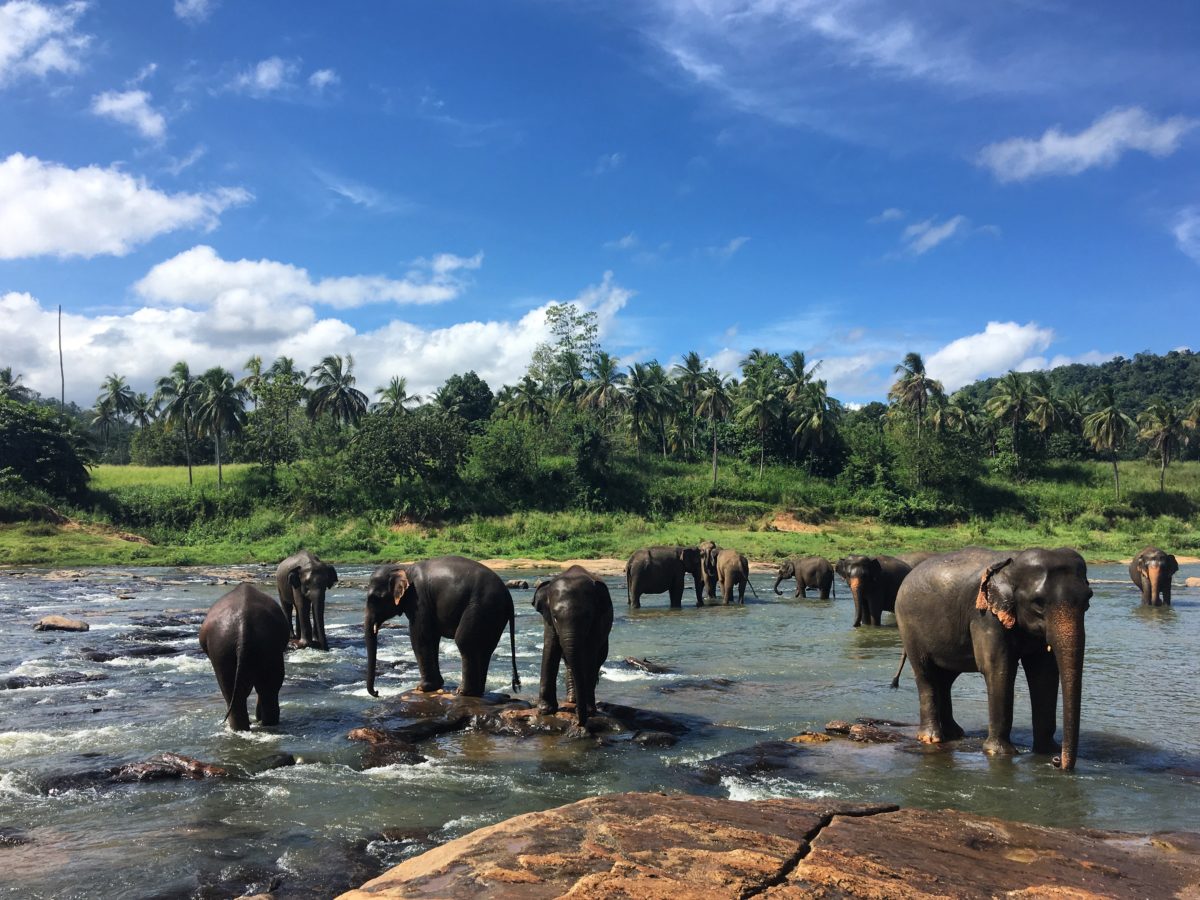
The elephant needs to bathe, to feel clean, but does it need all of us to shoot it with our cameras?
After 30 minutes, we decided to leave while the tourists can observe the elephants, or even go to caress them for a few more dollars to the Mahouts, for an hour and a half. Our driver didn’t understand why we wanted to leave but he decided to take us to one of those souvenir shops along the street that is off-limits outside of bathing hours.
Reluctant to spend any more money, we were surprised ( in a good way) by what we discovered. The back shop is, in fact, a kind of small atelier-museum where we can understand that elephant dung is turned into paper. And yes, collected and above all processed (a somewhat long process, which you can find information about here), the dung of an elephant makes it possible to make paper, and a quality one at that, part of the profits of which go to the World Society for the Protection of Animals to finance animal protection. This is the company Maximus. Workshops of this company can be visited all over Sri Lanka.
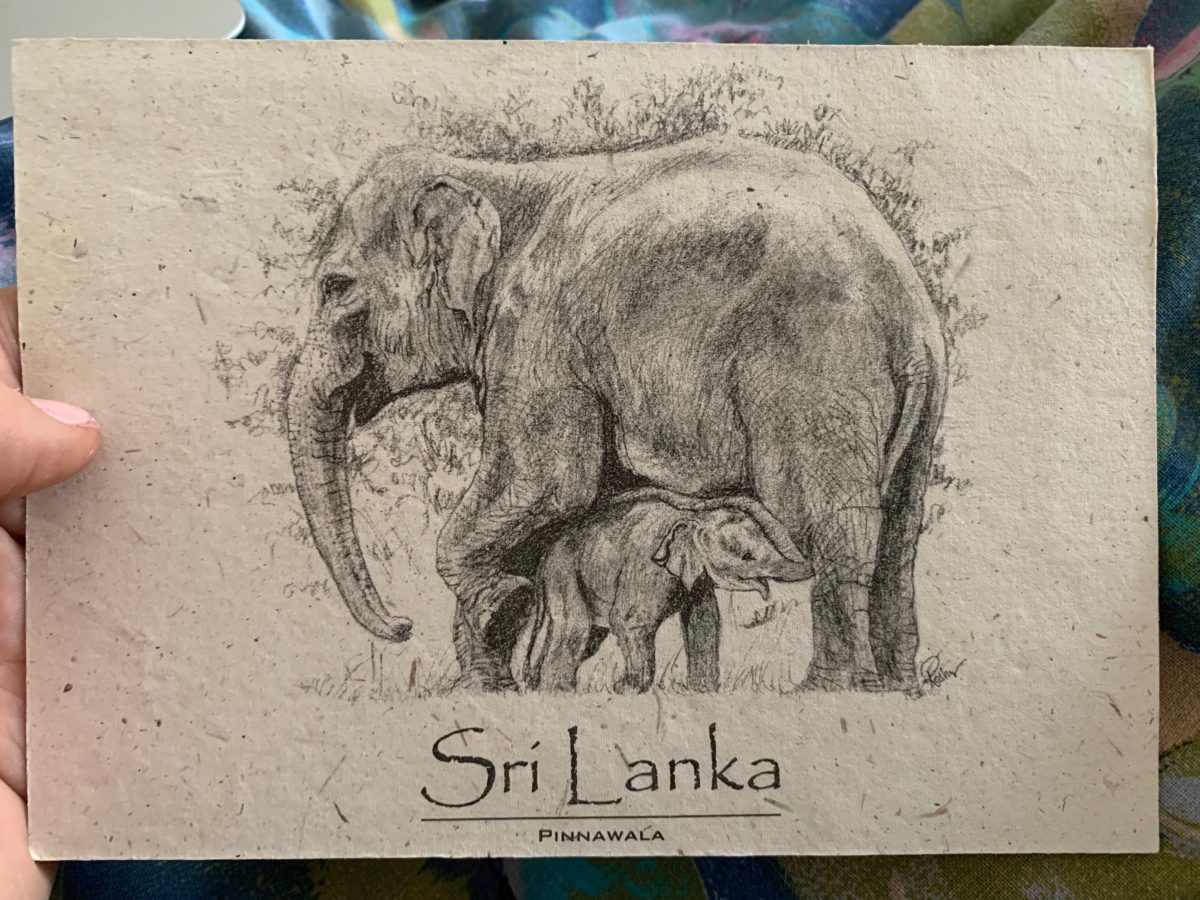
THERE WOULD BE TOO MUCH CONTACT BETWEEN TOURISTS AND ELEPHANTS
Firstly, physical contact between tourists and animals can be a popular photo opportunity. That’s also how I was. I wanted to have a picture with this beautiful animal, not necessarily my person next to it but I wanted to photograph it up close, to observe it because this animal has fascinated me since I was a child. However, following my visit, I now have the impression that it is degrading for the animals and that it does not promote respect and compassion among tourists.
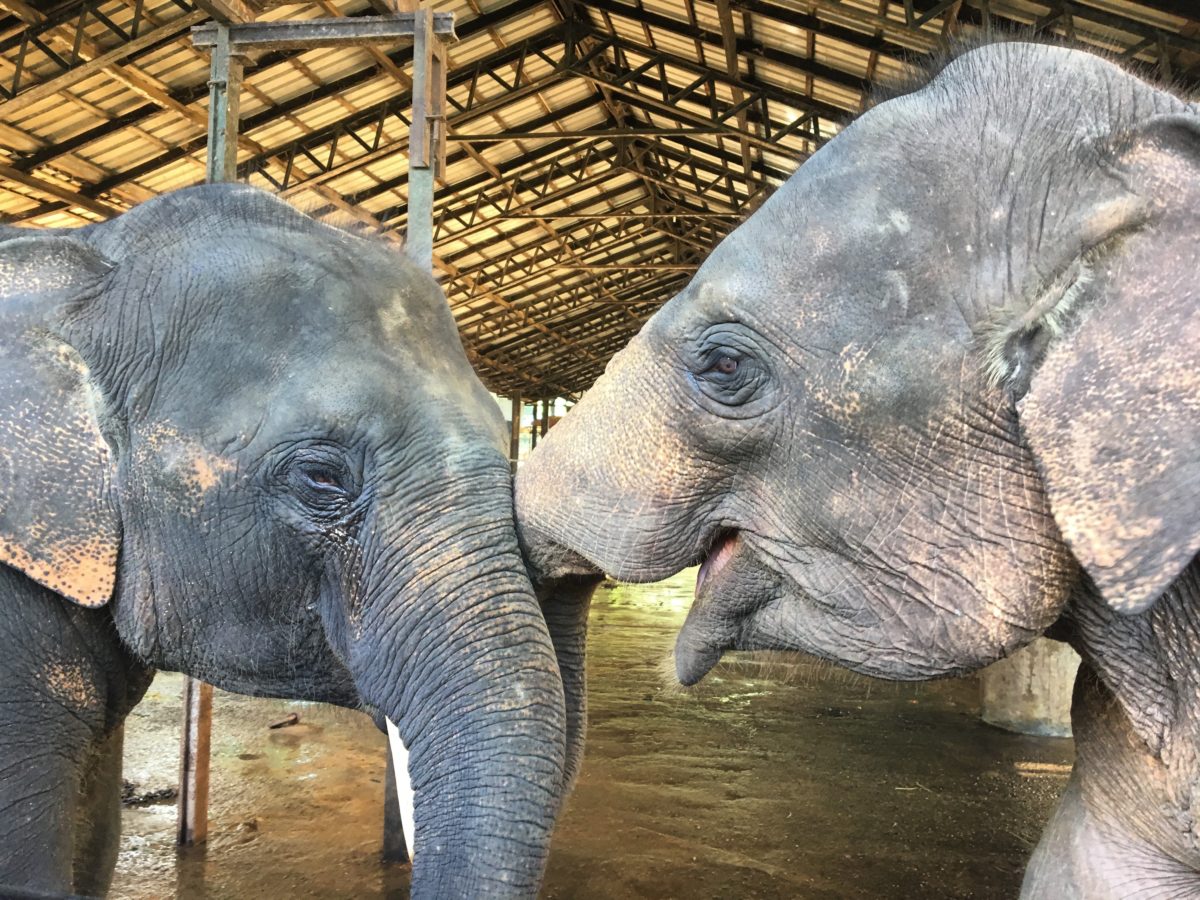

This is the sweetest thing I have experienced in Pinnawala.
Another key attraction of the orphanage is being able to bottle-feed the motherless elephant babies. For a little more money than the entrance fee, a ticket allows the tourist to approach the baby and pour milk into its mouth for a few seconds. Watching people fighting to be the first to bottle feed when I was waiting my turn, I could only feel a sense of spectacle, of a circus. No information was given about the baby’s need to be fed with milk or the circumstances of his coming to the orphanage. We even wondered if the baby elephants were not expressly fed to satisfy the tourists in this action…
THEY WILL NEVER BE RELEASED INTO THE WILD
Since 1975, many elephants have been born in captivity and, unfortunately, would not know how to manage on their own outside the orphanage. They have never learned how to look for food or how to protect themselves from predators.
And then, if the pachyderms were released into the wild, having lived with humans, and above all having been fed several times a day by them, they would go directly to visit the first dwellings found, in search of food, which could injure the inhabitants, or even injure them, following the reaction of the people as a sign of protection.
Before concluding on this orphanage, I still have a few facts to put forward concerning the overly touristic and economic aspect of the place. Clearly not appreciating the way the animals are treated, I still wondered why Pinnawala depends so much on tourists?
The orphanage takes care of almost 90 elephants that have to be fed several times a day. Each of these elephants eats between 100 and 150 kg of food per day and drinks about 40 litres of water. The young elephants need to be fed milk 5 times a day!
It’s a lot of milk and a crazy amount of food, mainly grass, fruit and plants. So, can we imagine the total cost of all this, and how much money it costs to run a place like this? That’s why tourist money is essentital to help pay this huge daily food bill and to pay the staff who work with and care for the elephants.
So I didn’t mind at all paying a large but still relatively cheap amount of money to learn about the animals’ needs. However, I can still only feel disappointed that I wasn’t informed about this during the visit.
SHOULD YOU VISIT PINNAWALA ORPHANAGE?
It’s up to you. If I had had much more information about this, I suppose I would clearly not have visited it, although I sincerely, though perhaps naively too, believe that elephants are not exploited for money. I just hope that the welfare of elephants is their number one priority. However, at the heart of my legitimate concerns, it just occurs to me that tourism can help the conservation of a place like this, albeit under much better conditions.
I’ve been studying the tourism industry for a year now, but I see so much of the profit-making aspect that disturbs me in this industry, that the human aspect (i.e. living creatures) is, unfortunately, often put aside. Yet this should be the first to be taken into account. However, to fund good places for animals, tourism is necessary, and to ensure this tourism, there are clearly many changes to be made in the way conservation is practised in Pinnawala.
The lack of education of tourists about these animals or conservation projects is blatant. I was the first to be misinformed. A site like Pinnawala, under the aegis of the government moreover, should inform its visitors about the needs of elephants or even about appearances that could make tourists feel uncomfortable (the use of chains for example).
Moreover, the living conditions, treatment, etc. could be much better, as the following example shows.
THE BEST ALTERNATIVE TO PINNAWALA
During the trip, we discovered another place where we felt positive vibes about the condition of the elephants. It is the Elephant Home Transit, an annexe to the Udawalawe National Park.
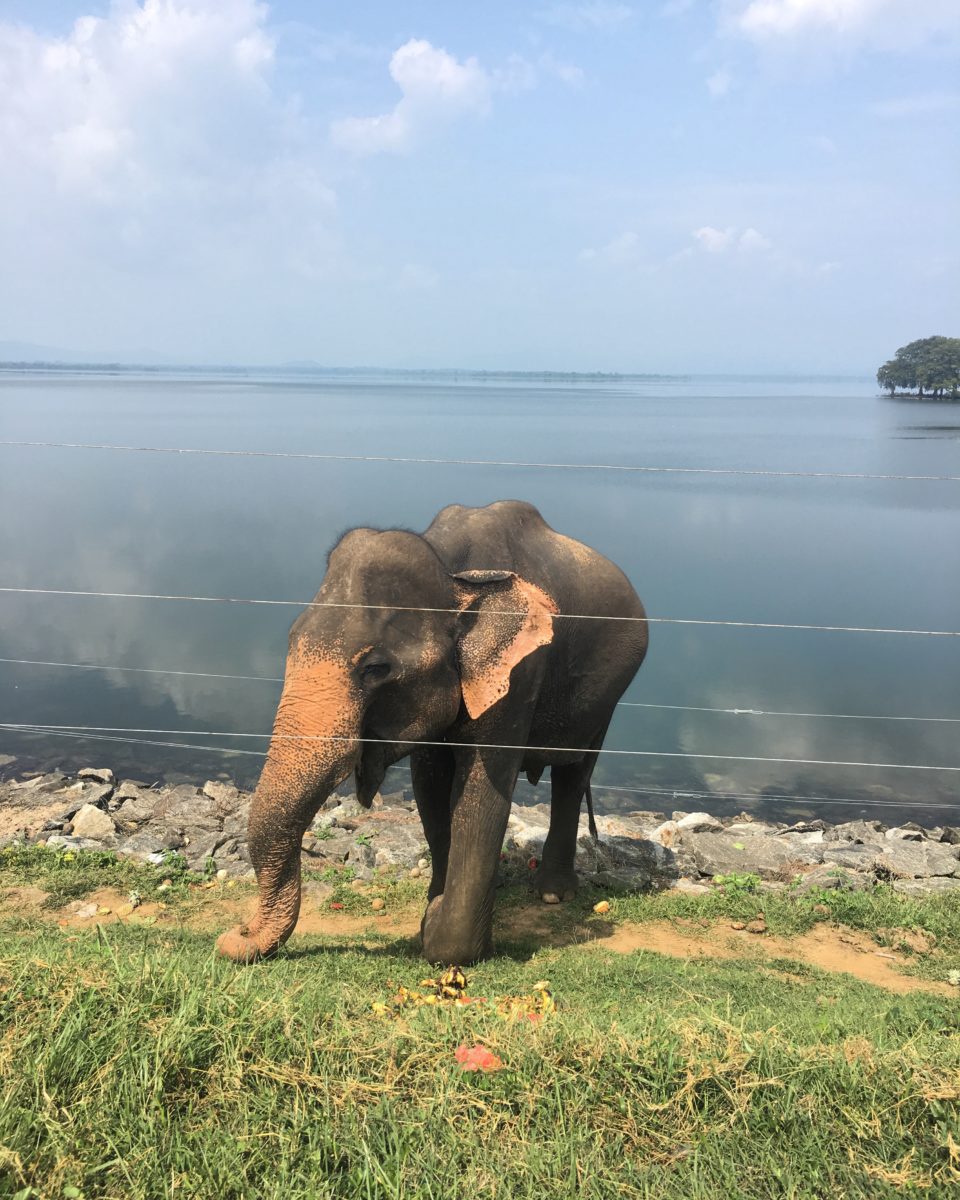
According to our driver, this elephant lives solitary in the park but loves to see travellers passing by by car.
This part of the park takes in baby wild elephants that have been separated from their mothers and takes care of feeding them until they can be returned to the wild.
In fact, the young animals spend their days roaming freely in a section of the park, observed from a distance by a few researchers. They are fed every three hours in a specially constructed feeding area, and this is the only time they can be seen by tourists, who watch them from an observation platform separate from the courtyard.
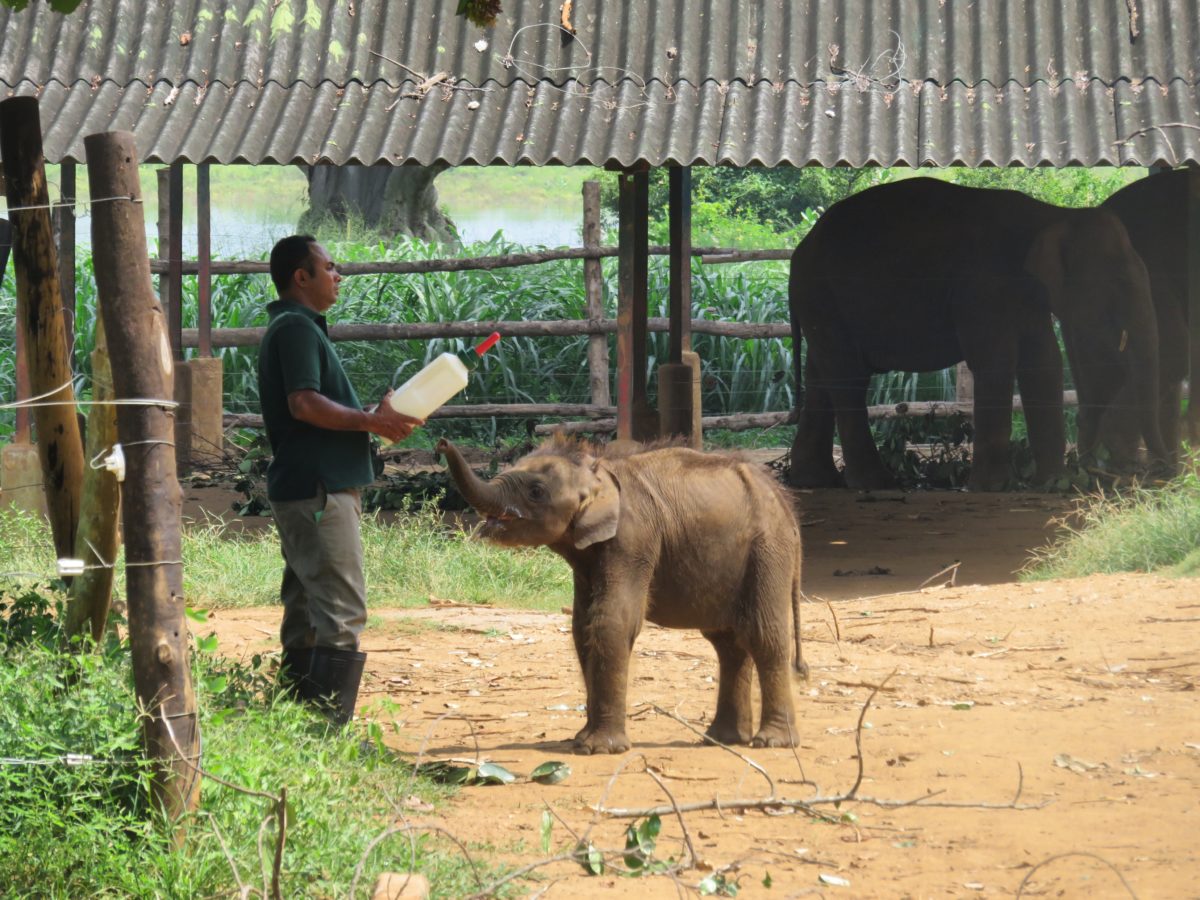
At no time may the tourist have physical contact with the animal. Elephants are herded in the yard by staff who sometimes touch them with thin sticks that do not break the skin to discipline them a little (and, judging by the frequency with which they are ignored by the elephants, cause minimal discomfort).
Watching elephant babies at feeding time is very popular with locals and tourists alike. You can feel the animals enthusiastic, relaxed and full of character. While waiting for feeding time, the visitor can take a walk in the area provided, where information about elephants is displayed in the form of a museum. Admission is naturally subject to a fee, but it is not the same as in Pinnawala.
The aim of this project, also under the aegis of the government, more specifically under the Department of Wildlife Conservation, is to have donations as well as sponsors (one per elephant) who help in the preservation and well-being of this place. Their website is very well done and allows a full understanding of this beautiful project.
Have you ever visited a place where you didn’t really like the ethics of it? I would be happy to hear your opinions.
